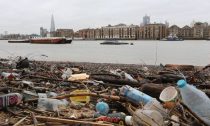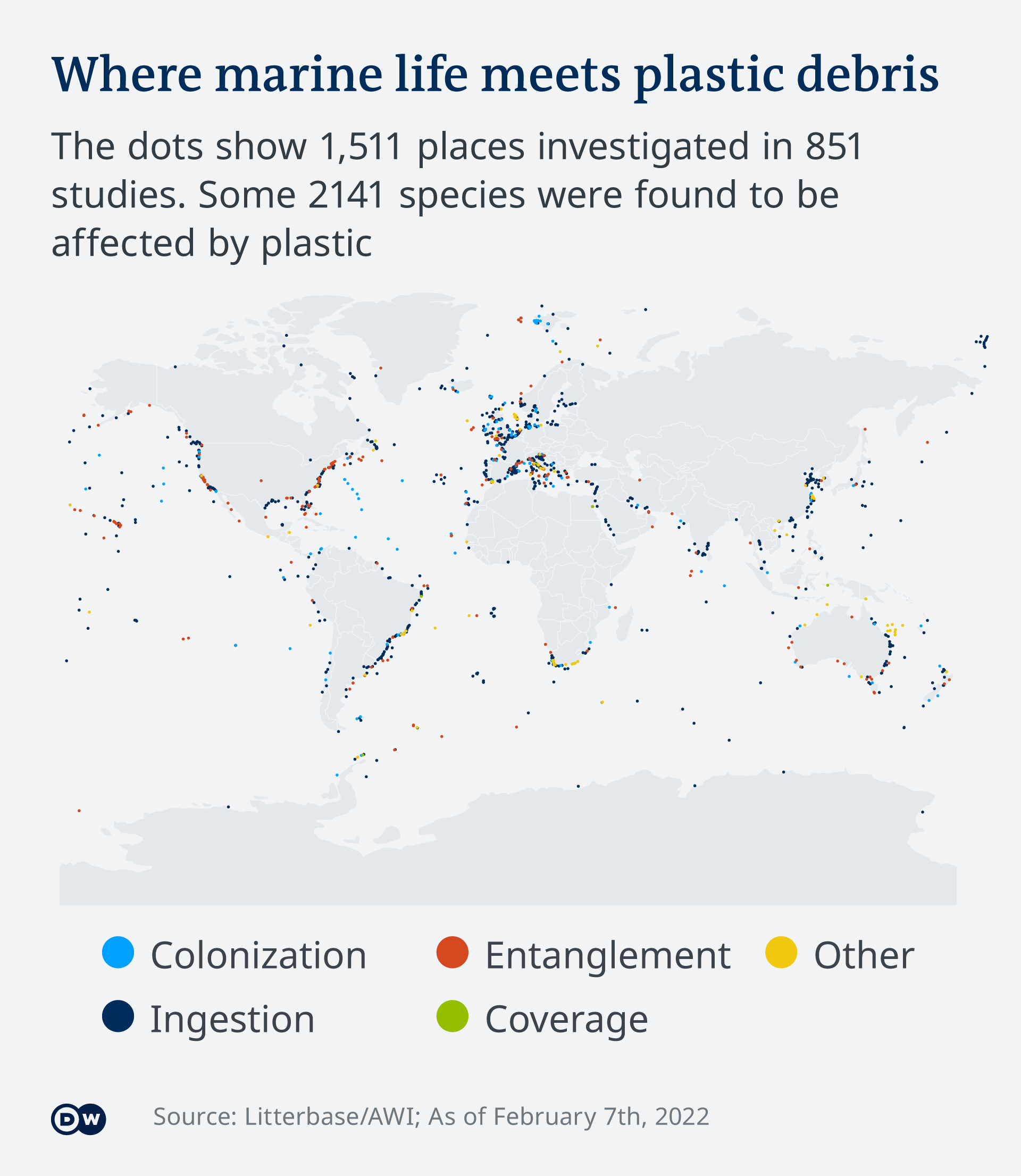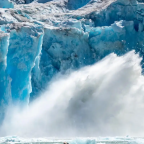
Plastic pollution now plagues almost every species living in the oceans and, at the same time, sea surface temperatures once considered extreme have now become normal. Those are the findings of two separate studies published in February ahead of the ongoing One Ocean Summit, a conference organized by French President Emmanuel Macron to protect marine life from overfishing, climate change and pollution. Together, the research papers tell a story of an ecosystem vital to human survival that is increasingly under attack.
The first study, published in the journal Plos Climate, found heat that used to be considered rare had become normal for most of the world’s oceans. “Extreme climate change is not a hypothetical future possibility,” the researchers wrote, “but a past historical event that has already occurred in the global ocean.”
Dead sea turtles have washed up on beaches with bags, bottle caps and other pieces of plastic in their stomachs
The second study, commissioned by conservation organization WWF and conducted by scientists at Germany’s Alfred Wegener Institute, reviewed thousands of academic papers to find regions like the Mediterranean and East China Sea had passed critical pollution thresholds. It documented negative impacts of plastic on 88% of 297 species studied. In some cases, species ingest or become entangled in plastic, in others they “colonize” it.
The findings are shocking but cover only a fraction of the lifeforms under threat, Heike Vesper, director of WWF Germany’s marine program, told DW. “It’s like turning on a pocket torch in the dark.”

Hotter oceans
When two ecologists from Monterey Bay Aquarium, a US conservation group, saw a marine heat wave devastate giant kelp forests off the coast of California, they decided to work out how extreme it really was. They took 150 years of sea surface temperature measurements to set a historical benchmark of extreme heat in the oceans. In the late 19th century, the researchers found such temperatures happened in about 2% of the sea area.
Then the Industrial Revolution took off.
As people began to burn fossil fuels to power machines and heat their homes, they released gases into the atmosphere that trapped sunlight and warmed the planet. That greenhouse effect has pushed global average temperatures about 1.2 degrees Celsius (2.2 degrees Fahrenheit) higher. At the same time, it has made heat waves dramatically more likely.
Burning fossil fuels like coal has raised global temperatures and endangered marine life
More than half the world’s oceans experienced extreme heat in 2014, the researchers found. The area of ocean seeing such temperatures rose in each year that followed. In 2019, it reached 57% of the total ocean surface. The hotter temperatures have pushed fish out of their natural habitats and rocked entire ecosystems.
“We’re not just talking about sea turtles and whales and tuna,” said Kyle Van Houtan, former chief scientist at Monterey Bay Aquarium and co-author of the study, adding that ocean heating was also a question of livelihoods and national security. “Three billion people on this planet every day get their primary source of protein from the ocean.”
Fish is the main protein source for almost half the people on the planet
The researchers described the extreme heat as a “new normal.”
Other scientists have stressed that while the climate today is not the same as it was before, it is on track to get even hotter. Because every additional ton of carbon pollution in the atmosphere heats the planet further, temperatures that are considered normal today will be considered cool in the future.
“[Calling it a] ‘new normal’ makes it sound like we already passed through a change and now it’s done,” said Scott Denning, a climate scientist at Colorado State University. “But instead we are climbing a steep slope for which there’s no end in sight.”
Plastic pollution
A separate pollution crisis is also threatening underwater plants and animals.
Plastic pollution is found everywhere in the oceans and is almost impossible to remove once it gets in, the WWF/Alfred Wegener study found. Even if plastic pollution were to stop today, the authors warned, the amount of microplastic in the ocean would double as bigger pieces break down.
“The most important finding is that once plastic has started to decompose into microplastic or nanoparticles, it can no longer be removed from the system,” said WWF Germany’s Vesper. “The ocean is the final sink for plastic waste on this planet.”
Only 9% of plastic made has ever been recycled, according to a study published in the journal Science Advances in 2017. About 12% has been burned, while the rest has been thrown into landfills, dumps and nature. While some landfills are tightly secured, plastic that has been left lying around eventually gets into waterways that carry it to the sea.
Plastic waste in unsecured landfills often ends up in waterways
The study authors warned that the observed declines in marine life were hard to trace back to any single factor because the oceans are so overwhelmed with threats that range from temperature change and ocean acidification to pollution and overfishing. But an increase in plastic pollution would provide a further threat to species, the study found.
Coral reefs, for instance, as so vulnerable to warming that they would be effectively wiped out if temperatures were to rise 2 C above pre-industrial levels, according to the UN Intergovernmental Panel on Climate Change. At 1.5 C — the temperature threshold to which world leaders have pledged to aim to limit global warming — about three-quarters of corals would be lost.
But on top of that, said Vesper, plastic pollution blocks out sunlight and damages corals with its abrasive edges.
Protecting oceans
Conservation groups like the WWF have called for a legally binding global treaty on plastic waste with “specific, clear and universally applicable rules” for the entire life cycle of artificial products. The calls have been echoed by companies like Coca Cola, Nestle and Unilever — which sell products like soft drinks and shampoo packaged in single-use plastic — ahead of a UN summit in February to tackle plastic pollution.
Previous global UN treaties on the environment have been criticized as ineffective for making reductions in pollution voluntary. The landmark 2015 Paris Agreement on Climate Change, for instance, does not set binding targets for how much countries should cut their carbon pollution each year.
At the One Ocean Summit in the French port of Brest, which ends Friday, world leaders have met to discuss topics like deep sea mining, greater protection for the high seas, and plans to safeguard 30% of the world’s oceans by 2030.












Social Profiles